Process photos of Biwa project.
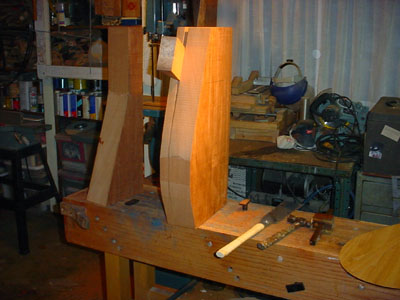
The entire project, excepting the soundboard, is being made from a single 4" thick slab of mahogany. Traditionally the body is carved from a single piece of mulberry, but I chose mahogany for its ready availability and ease of carving. The body outline has been traced and partially cut away on the bandsaw. The extra inch of thickness is being split away. This remainder will be used for the pegs.
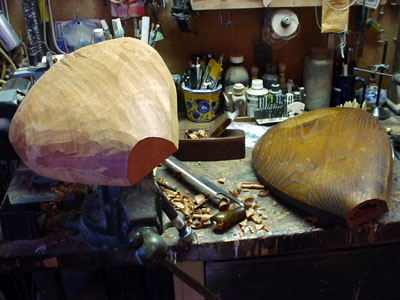
A drawknife is used to do the rough shaping. The shape at the neck end is penciled on for reference. The Mosobiwa body is on the workbench for refernece. At this phase it is easier to "feel" the correct thickness. When the shape gets close to the finished size, cross-section templates derived from the drawing are used for final shaping. It is already possible to see that the Chikuzen is not as flat as the Moso and has a more pronounced curve at the neck end.
The body has been hollowed and the channel to accept the soundboard is being carved
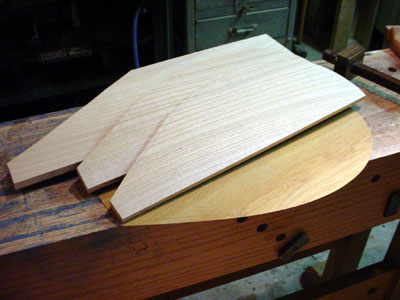
The bookmatched soundboard blanks are cut and the pattern is traced.

The top is joined and shaped to the final outline and the soundhole shapes are traced from a template and routed out to accept the bone crescents.
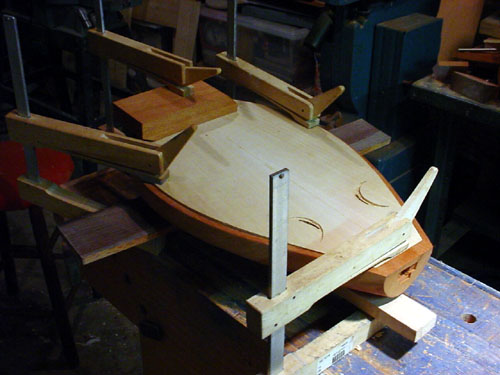
The soundboard is attached to the body. The underside is carved slightly to follow the curved cross-section of the body, however some pressure is used to press the side edges down into the routed channel. This slight tension on the soundboard improves the tone. The remaining portion rising above the edge of the body will be planed down flush.

The neck is nearly finished with the pegbox set in the top tennon. The outside shaping is nearly complete and ready for the peg holes and channel to be carved. Also pictured is the reconstruction work on my Mosobiwa, which I acquired nearly ten years ago with the pegbox missing. My reconstruction is attached in the same state of finish as the Chikuzen
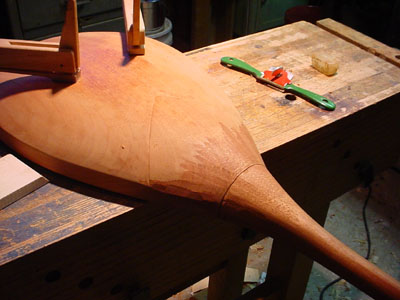
The mortise at the body is complete and the neck temporarially attached for the final shaping of both at the seam.
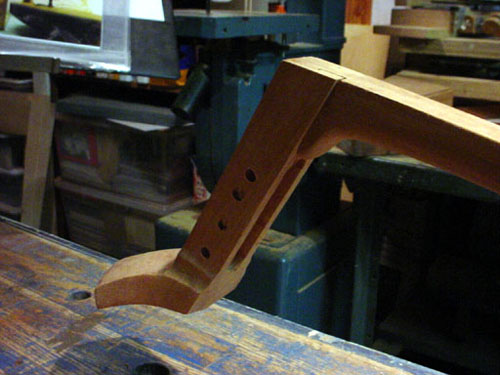
The pegbox is complete, save for the final reaming of the holes to accept the pegs.

The body has been joined with the neck and the bridge is temporarily attached. The pegbox is complete and in place. The pegbox and neck are removeable with mortise and tennon joinery. The next step is the manufacture of the bridges (frets) and the pegs.
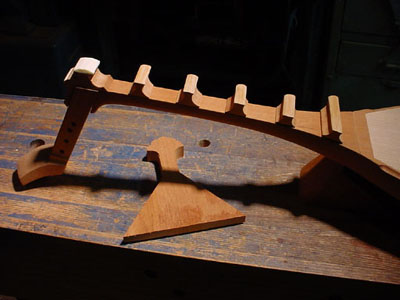
The instrument is nearly complete. The bridges (frets) have been fitted with bamboo caps and the bachi (plectrum) has been rough carved.
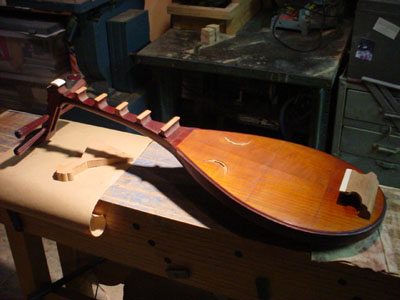
The staining and laquering is complete save for the bridge which is still unattached and awaiting the inlay work. The frets are not permanently attached. They will be placed after stringing for correct intonation. THe crescent shaped soundhole covers are the final pieces to be manufactured

Detail of the bridge inlay.
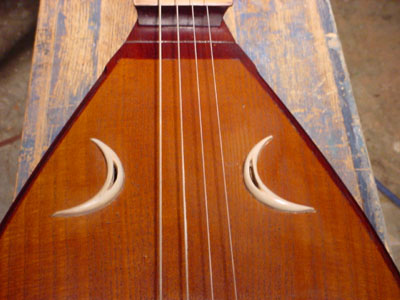
The soundhole covers are complete. This is maple, gessoed and tinted to simulate bone.
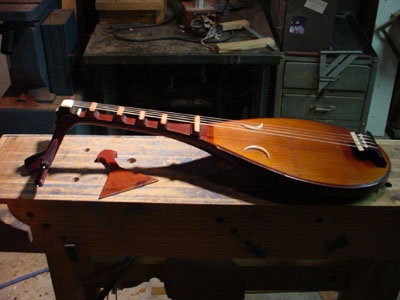
The instrument is complete, 3 months after the first photo.

A sketch of jigs needed to route the top and corresponding rebate in the body for production. Also a jig for the lathe for peg fluting.
Some subsequent bachi making. . .
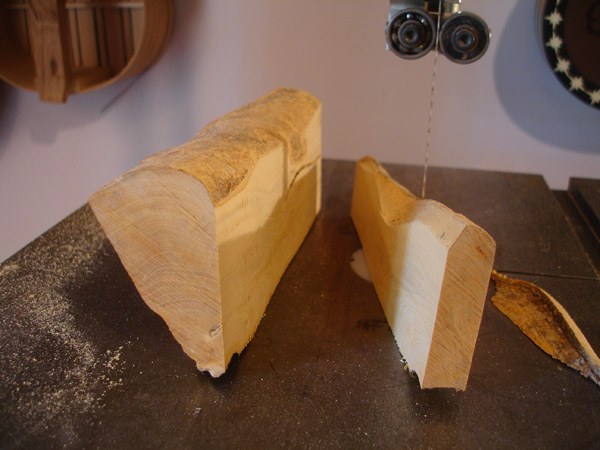

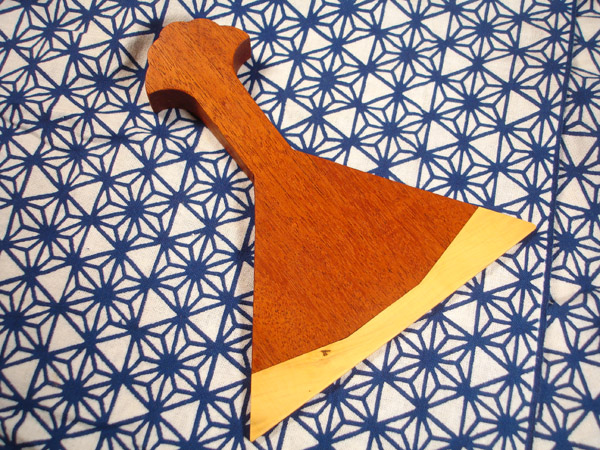
The betsill workshop: your bachi-making headquarters! This is the plectrum for a Chikuzen biwa. It's the third commission in as many years I have had for one of these implements. Mahogany for the body, boxwood for the blade. When I think of all the bachi-less biwas out there it breaks my heart.
Bring it HOME.
The
Lord replied, "If you had the faith the size of a mustard seed, you
could say to this mulberry tree, 'Be uprooted and planted in the sea,'
and it would obey you."
